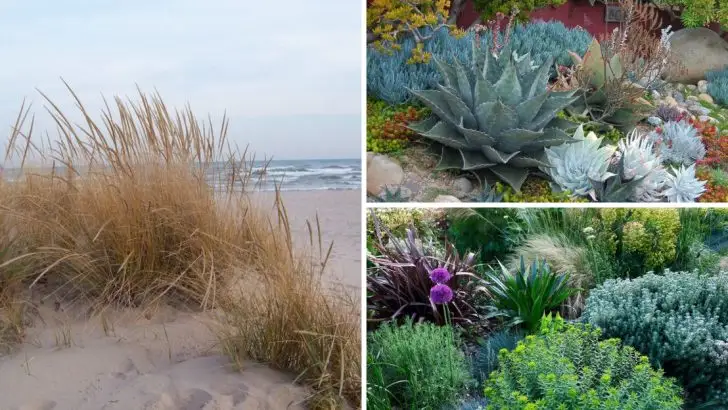Coastal landscaping can be a real challenge, especially when it comes to dealing with the salty air, strong winds, and tough soil conditions. The harsh environment often limits the types of plants and materials you can use, but with the right choices, you can create a beautiful and functional outdoor space that thrives by the sea. The key is selecting the right plants, structures, and techniques that can withstand these elements.
This list of 20 coastal landscaping ideas will help you design a space that not only looks great but is also resilient to the tough coastal conditions. From wind-tolerant plants to durable outdoor furniture, you’ll find practical solutions that will keep your garden thriving even in the most challenging environments.
Beach Grass Waves
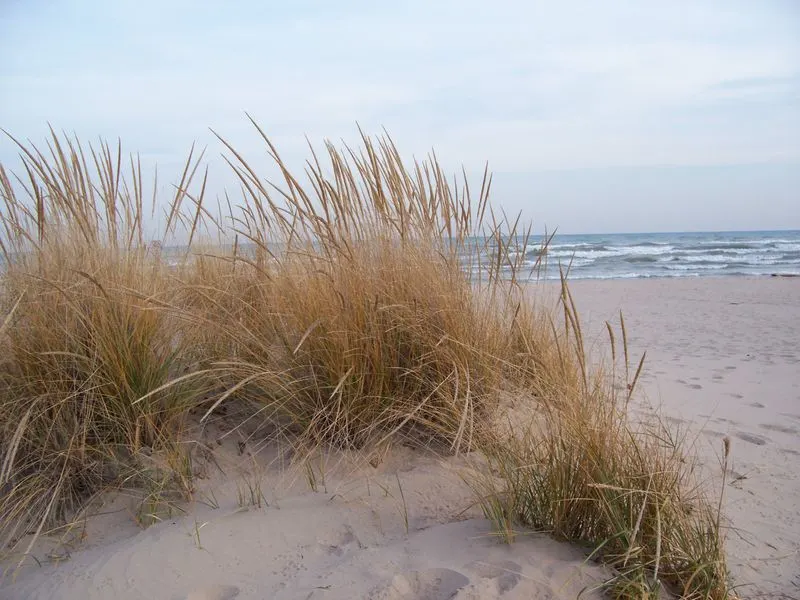
Imagine beach grass swaying rhythmically to the gentle ocean breeze. These hardy grasses are not only beautiful but also functional, serving as natural sand stabilizers. Planting beach grass can help prevent erosion while adding a touch of wild beauty to your landscape.
Choose hardy varieties like Ammophila breviligulata or Leymus arenarius, which are well-suited for sandy soils and salt exposure. Their deep root systems ensure stability and resilience, making them perfect for coastal gardens. Plus, they require minimal maintenance, freeing up your time to enjoy the ocean view.
This is a tried-and-true method of marrying aesthetics and practicality in coastal settings.
Seaside Succulent Garden
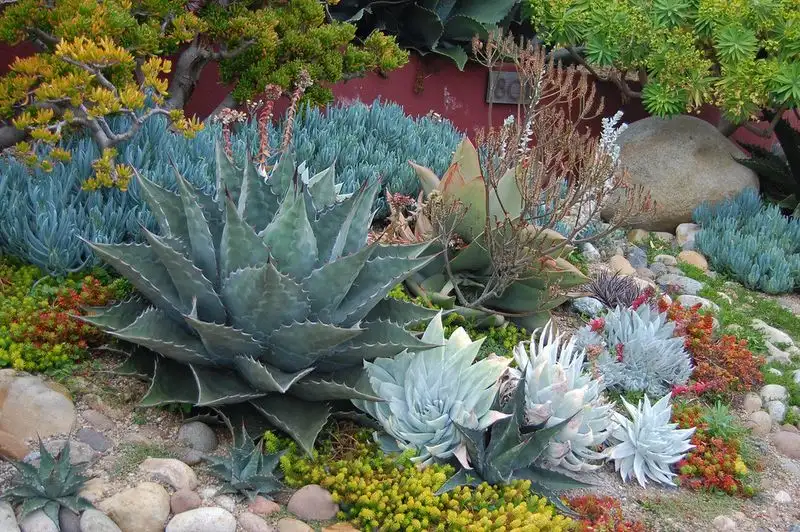
Succulents are the unsung heroes of coastal landscaping. Their thick, fleshy leaves store water, making them drought-resistant and ideal for the salty wind-swept environment.
Consider planting a variety of succulents, such as Sedum and Echeveria, in a rock garden. This adds texture and color to your landscape while providing a low-maintenance solution. Succulents also offer a striking visual contrast against sandy or rocky backgrounds, highlighting their unique shapes and hues.
Their resilience means they thrive where other plants might falter, making them a favorite choice for seaside gardens.
Wind-Resistant Shrubs
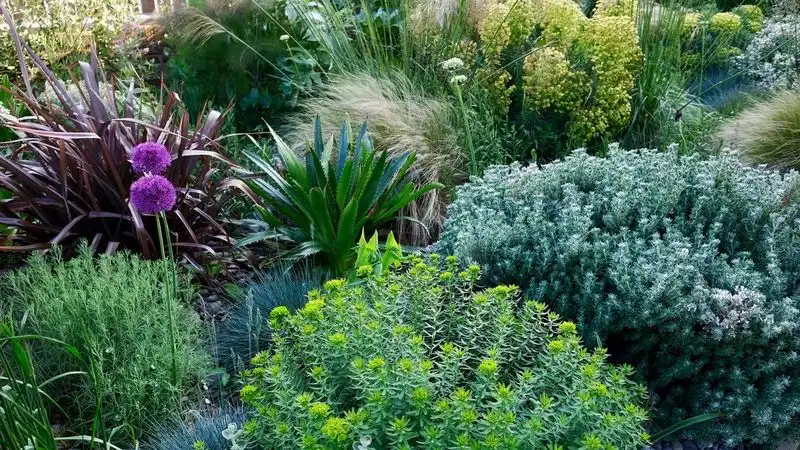
Wind-resistant shrubs provide both beauty and function in coastal gardens. They’re perfect for creating natural windbreaks that protect more delicate plants.
Consider using native shrubs like Myrica pensylvanica, which has a compact form and withstands salty breezes. These shrubs not only protect against wind but also add lush greenery and texture to your landscape.
By planting them strategically, you can create microclimates that foster the growth of more sensitive flora, ensuring a diverse and thriving garden. Plus, their dense foliage provides habitat for coastal wildlife.
Driftwood Art Installations
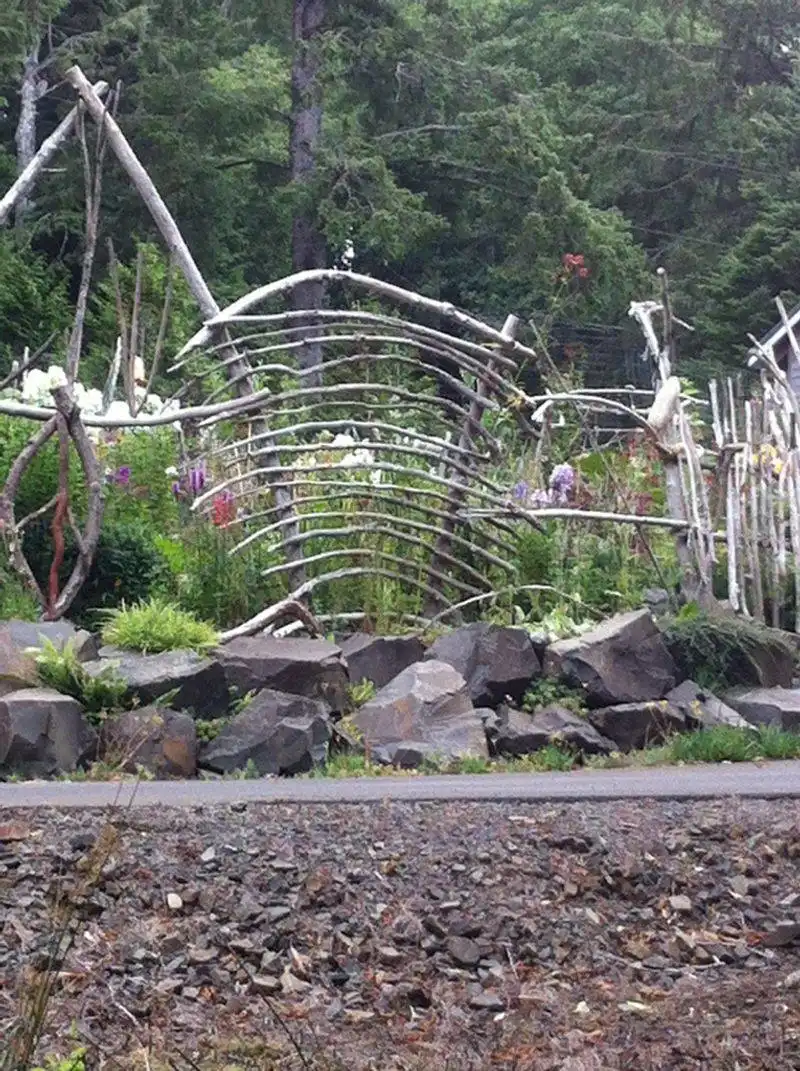
Driftwood art installations bring a touch of rustic elegance to coastal landscapes. These natural sculptures, shaped by the sea, add a focal point to your garden that is uniquely charming and sustainable.
Position driftwood amongst native plants to create a harmonious blend of art and nature. This not only enhances visual interest but also reflects the maritime environment.
Consider using different sizes and shapes to craft a cohesive design that stands out against the backdrop of your garden. Driftwood is a timeless addition, offering both beauty and a nod to the ocean’s enduring influence.
Native Flower Meadows
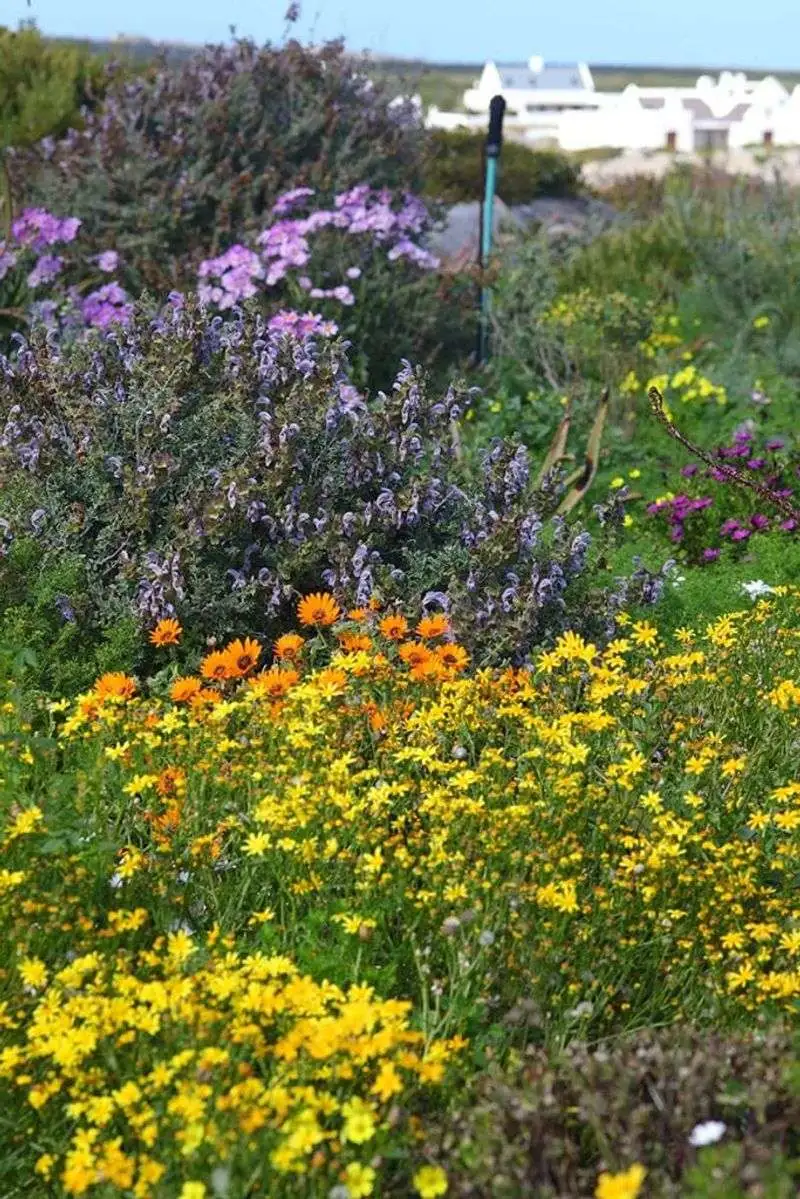
Transform your coastal garden with a meadow of native flowers that burst with color and life. These flowers are adapted to local conditions, making them resilient against salt and wind.
By selecting a variety of species, you create a tapestry of blooms that change with the seasons, attracting bees, butterflies, and birds. This not only beautifies your space but also supports local biodiversity.
Moreover, native meadows require less maintenance and water, freeing up your time to enjoy the serene coastal setting. It’s a sustainable and picturesque way to enhance your landscape.
Sand Dune Sculpture
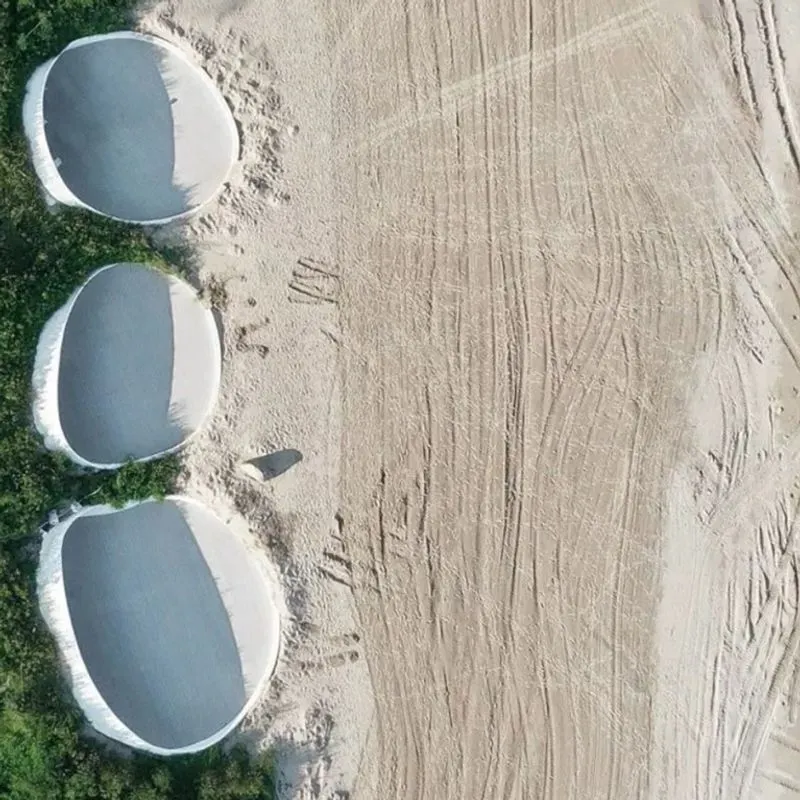
Sand dune sculptures bring a playful yet elegant touch to coastal landscapes. By sculpting the natural sand into artistic forms, you create dynamic and ever-changing art that complements the surrounding environment.
Enhance these sculptures with plantings of hardy dune grasses, which provide stability and texture. This not only secures the dunes from erosion but also adds layers of interest to your garden design.
These sculptures become unique focal points that capture the essence of coastal living, celebrating both the natural terrain and artistic creativity.
Coastal Wildflower Borders
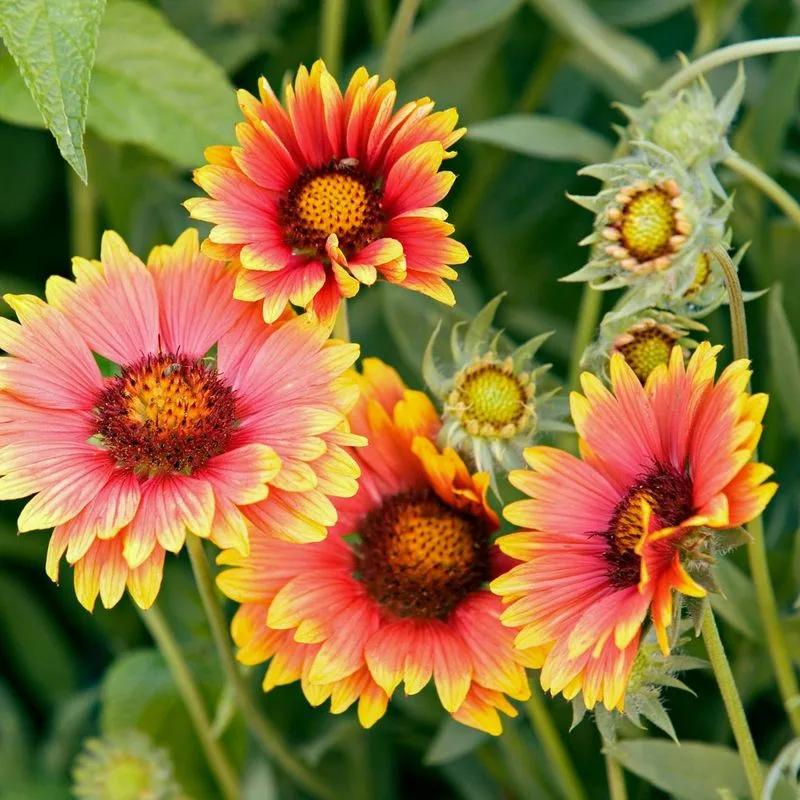
Wildflower borders are a delightful way to add bursts of color and life to your coastal garden. These borders not only beautify pathways and edges but also thrive in tough coastal conditions.
Select hardy wildflowers like Gaillardia or Coreopsis, known for their ability to withstand wind and salt spray. Their vibrant blooms attract pollinators, supporting local ecosystems and enhancing biodiversity.
By planting in masses, you create a visual feast that transforms ordinary borders into extraordinary displays. They are low-maintenance, offering an inviting and lively feel to any coastal landscape.
Rocky Pathways
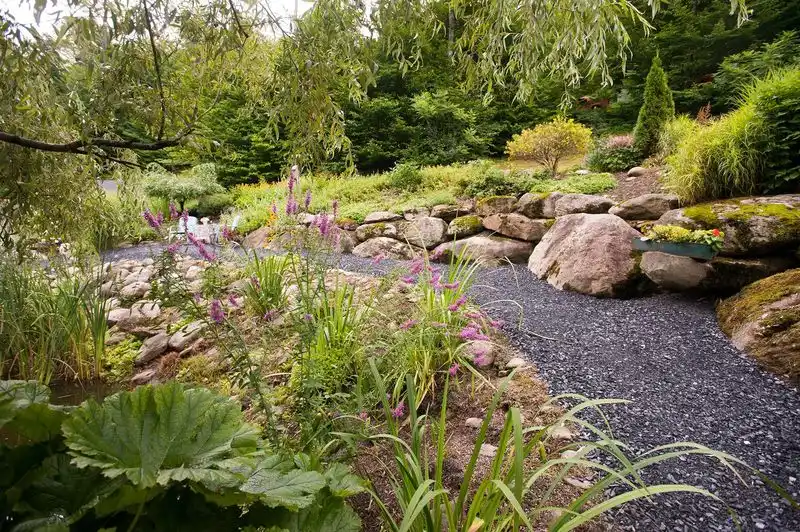
Rocky pathways add a rugged charm to coastal gardens, guiding visitors through the landscape while withstanding harsh conditions.
Use locally sourced stones to create a natural path that blends seamlessly with the surrounding terrain. This not only provides a practical walking surface but also enhances the garden’s aesthetic.
Interspersing sea grasses along the path’s edges adds softness and movement, creating a harmonious balance between the hard and soft elements. This approach ensures a durable and visually appealing solution for coastal pathways.
Coastal Herb Garden

Herb gardens by the coast are a sensory delight, offering flavors and fragrances that enrich your outdoor space. Hardy herbs like rosemary, thyme, and sage are well-suited to salty breezes and sandy soils.
These plants not only provide culinary benefits but also enhance your garden with their aromatic presence. Positioned near seating areas, they create a relaxing atmosphere for gatherings.
Their resilience makes them perfect for coastal climates, ensuring they thrive where other plants might struggle. A coastal herb garden is both practical and delightful, adding a flavorful twist to your landscape.
Shell Pathways
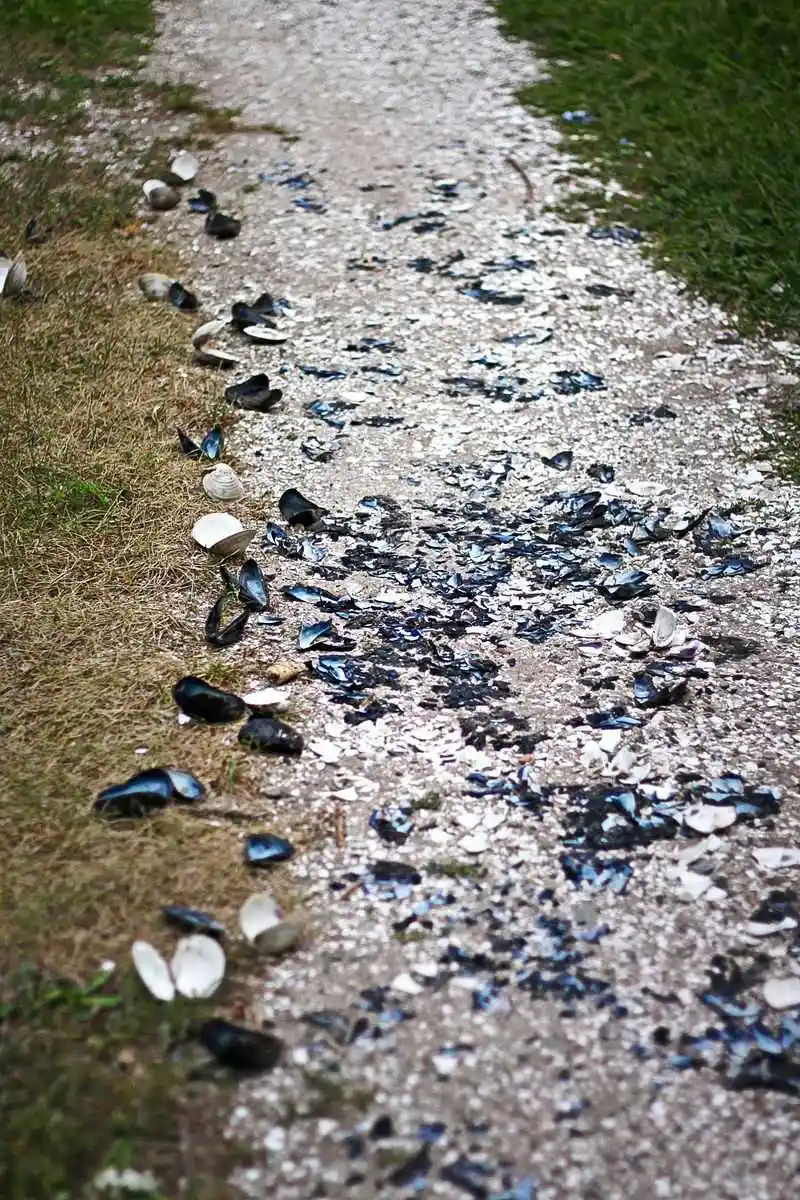
Shell pathways offer a whimsical touch to coastal gardens, creating an inviting and unique surface that echoes the nearby sea. Crushed shells compact well, providing a stable and durable pathway option.
The soft hues of shells reflect the coastal palette, complementing the natural environment. Over time, they break down, enriching the soil and enhancing your garden’s ecosystem.
Shell pathways are easy to maintain and provide a natural, eco-friendly alternative to traditional paving. This choice celebrates the seaside’s treasures, adding a playful yet practical element to your landscape.
Seashell Mulch
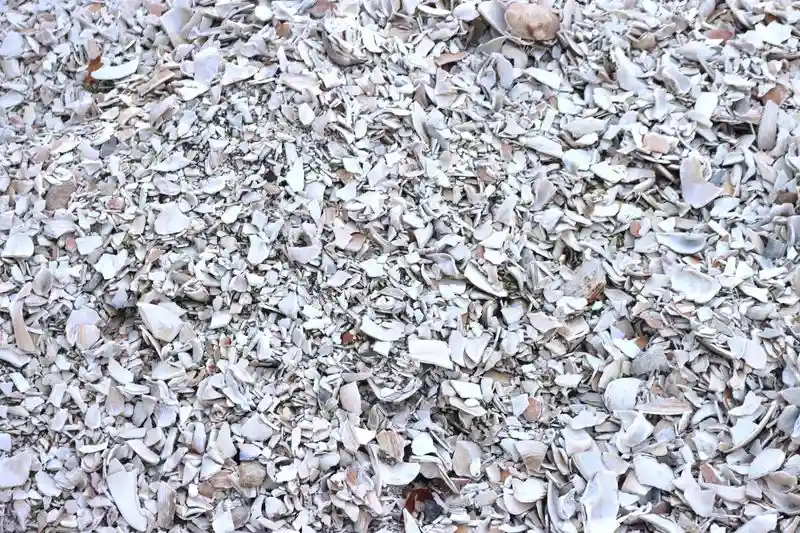
Seashell mulch is a distinctive and sustainable option for coastal gardens. The crushed shells reflect sunlight, keeping the soil cool and reducing water evaporation.
Their calcium content benefits the soil, promoting healthy plant growth. This type of mulch also deters pests and provides excellent drainage, essential for coastal plants.
Using seashells connects your garden aesthetically and ecologically to the seashore, enriching the landscape with a touch of authenticity. It’s a practical way to nurture your garden while reflecting the beauty of its coastal setting.
Tidal Pool Features
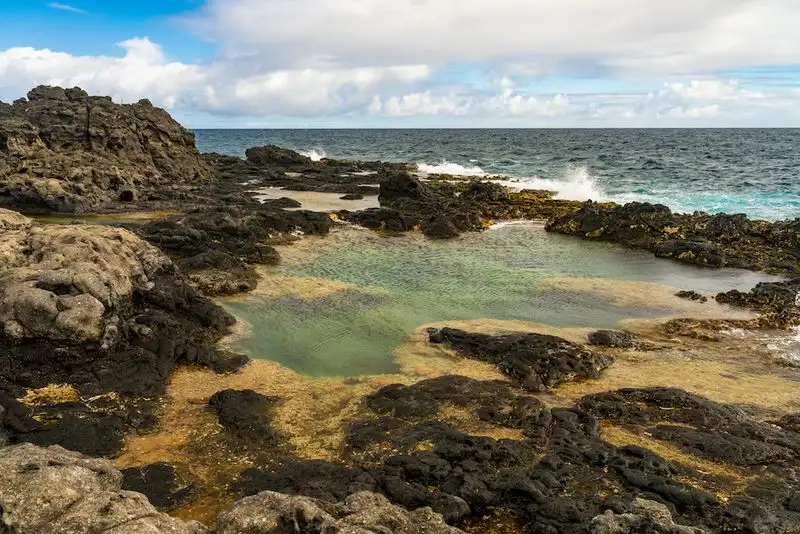
Tidal pool features bring the magic of the ocean to your garden, creating miniature ecosystems that mirror natural rock pools. These features use native stones and pebbles to construct an authentic appearance.
Incorporating marine organisms like sea stars or small crustaceans can enhance the experience, fostering a connection with the ocean. Tidal pools also offer educational opportunities, especially for children, to learn about marine life.
This addition creates a unique and calming focal point, perfect for those who wish to capture the essence of the sea in their landscape.
Beach Pebble Mosaic
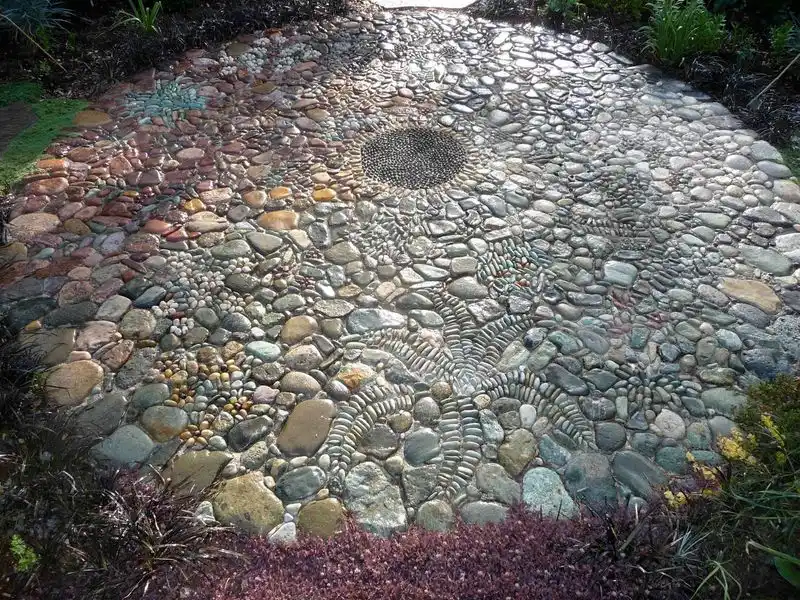
Beach pebble mosaics add an artistic flair to your coastal garden, transforming plain surfaces into captivating displays. By arranging pebbles into intricate patterns, you can create stunning visual features.
These mosaics work well in patio areas, walkways, or as decorative elements within garden beds. They reflect the natural textures and colors of the coast, offering a seamless integration with the environment.
Their durability makes them suitable for high-traffic areas, providing a lasting and beautiful solution that celebrates coastal artistry.
Coastal Patio with Fire Pit
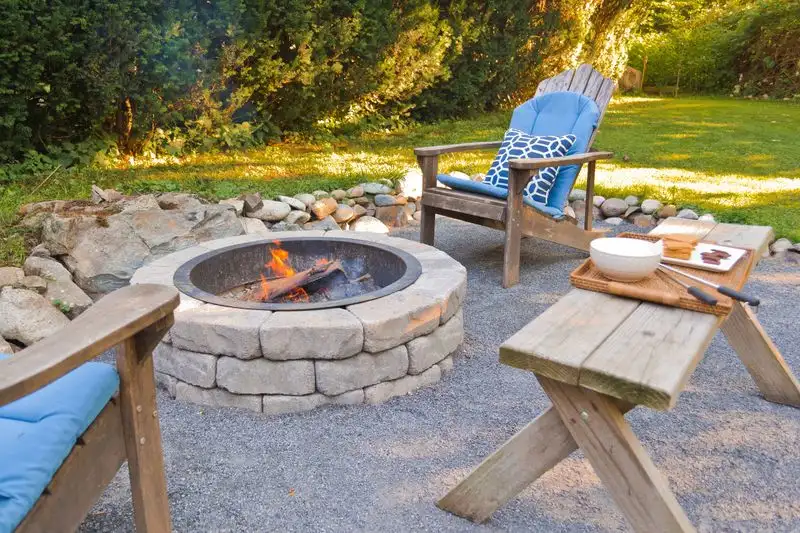
A coastal patio with a fire pit offers a cozy retreat for cooler evenings, allowing you to enjoy the seaside ambiance year-round. Use natural stones and materials to blend the patio with its surroundings.
Position the fire pit centrally, providing warmth and a gathering point for family and friends. The flickering flames enhance the atmosphere, adding a touch of magic to your evenings.
This setup creates a versatile outdoor living area, perfect for relaxation and entertaining. It’s a stylish yet functional addition that complements the coastal lifestyle.
Salt-Tolerant Groundcovers
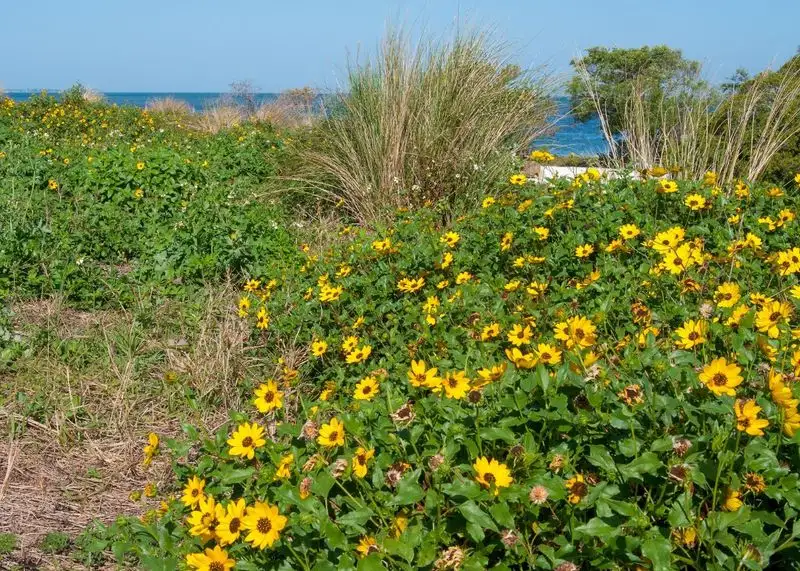
Salt-tolerant groundcovers are the unsung heroes of coastal landscaping. They form a lush green carpet that thrives in sandy, saline conditions, requiring minimal care.
Plants like creeping thyme and sea thrift are excellent choices, offering vibrant blooms and a dense mat that prevents soil erosion. These groundcovers also deter weeds, reducing garden maintenance.
Their ability to withstand harsh coastal elements makes them invaluable for maintaining a healthy and attractive landscape. They add an understated elegance to gardens, effortlessly blending with other coastal elements.
Coastal Fencing with Sea Views
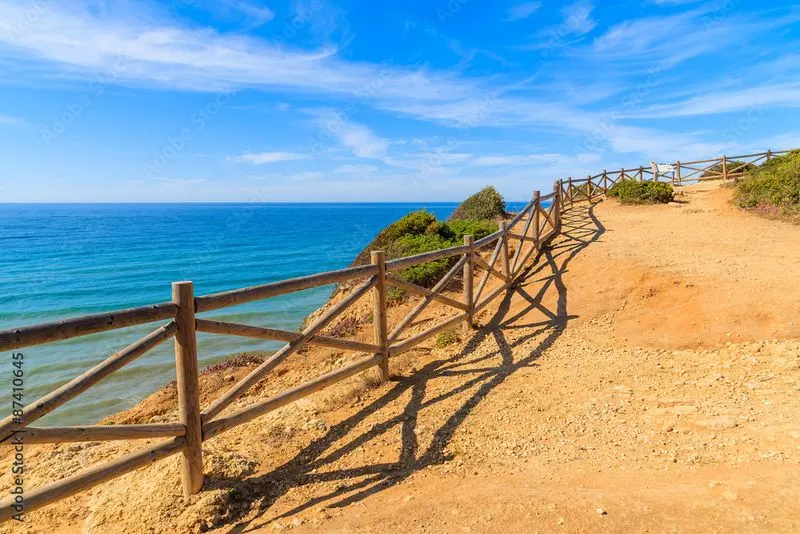
Coastal fencing provides both functionality and a frame for stunning sea views. Choosing materials like driftwood or weathered timber ensures the fence complements the natural environment.
Positioning the fence to highlight panoramic vistas enhances your outdoor space, allowing you to enjoy privacy without sacrificing scenery. This also helps protect plants from wind, creating a microclimate for more sensitive species.
The fence becomes a dynamic part of your landscape, offering both protection and a beautiful backdrop. It’s a practical solution that harmonizes with the coastal setting.
Breezy Pergolas
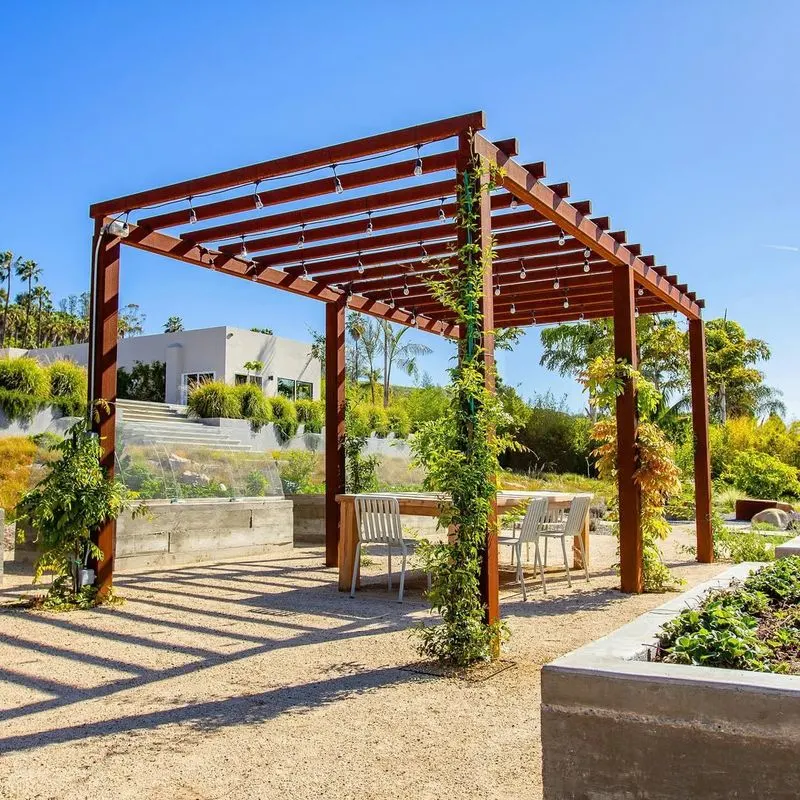
Pergolas provide a shaded retreat in coastal gardens, combining elegance with functionality. They offer shelter from the sun while allowing cool breezes to flow through.
Adorn the pergola with climbing plants such as bougainvillea or wisteria, adding color and fragrance to your outdoor space. This not only softens the structure but also enhances its beauty.
Positioning a pergola to maximize ocean views creates an inviting space for relaxation or dining. It’s a versatile addition that adapts to the coastal climate, providing comfort and charm.
Ocean-Inspired Water Features
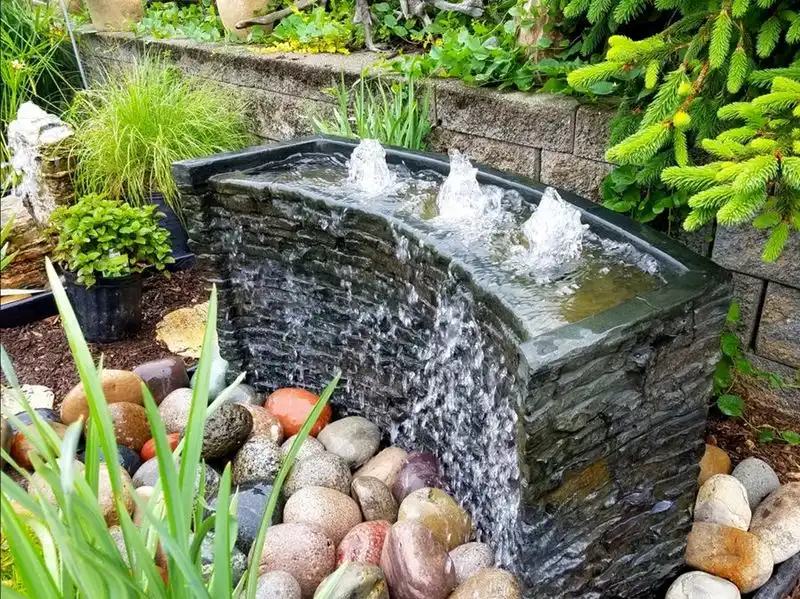
Water features inspired by the ocean add a tranquil dimension to coastal gardens. Whether it’s a bubbling fountain or a small pond, these features reflect the calming influence of the sea.
Incorporate natural elements like seashells and stones to enhance the theme, creating a cohesive look that resonates with the maritime setting. The sound of water brings a soothing ambiance, perfect for meditation or relaxation.
Water features provide a focal point that enriches the sensory experience, making them a cherished addition to any coastal landscape.
Coastal Bird Sanctuaries

Creating a bird sanctuary in your coastal garden invites the joy of wildlife into your space. By incorporating native plants, feeders, and water sources, you attract a variety of coastal birds.
These sanctuaries not only support biodiversity but also provide endless entertainment and education for nature enthusiasts. Position birdhouses strategically to offer shelter and nesting opportunities.
A harmonious blend of plants and features creates a lively and dynamic environment, fostering a deeper connection with the coastal ecosystem. It’s a rewarding way to enhance your garden’s vibrancy.
Giant Seashell Planters
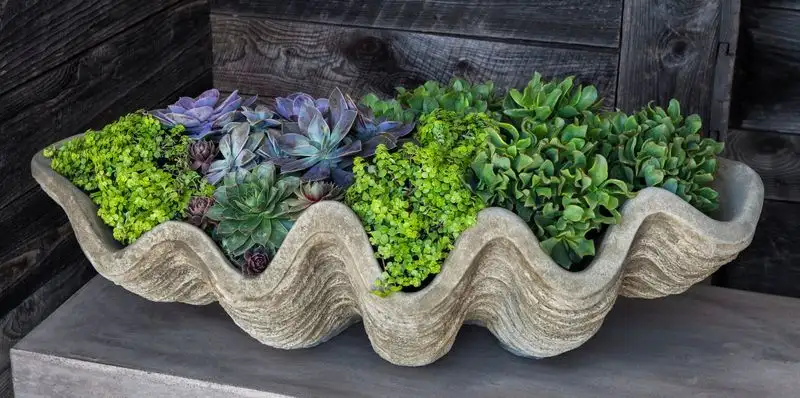
Ever thought of using giant seashells as planters? These unique vessels add a whimsical charm to any coastal garden. Imagine the gentle curve of a shell cradling lush greenery and vibrant blossoms.
The smooth texture and natural hue of the shell contrast beautifully with the vivid colors of the plants, making it a standout feature. Perfect for small spaces, these planters are both practical and artistic.
Place them strategically to catch the eye and withstand the coastal breezes. Opt for hardy, salt-tolerant species to ensure your seashell garden thrives year-round.

